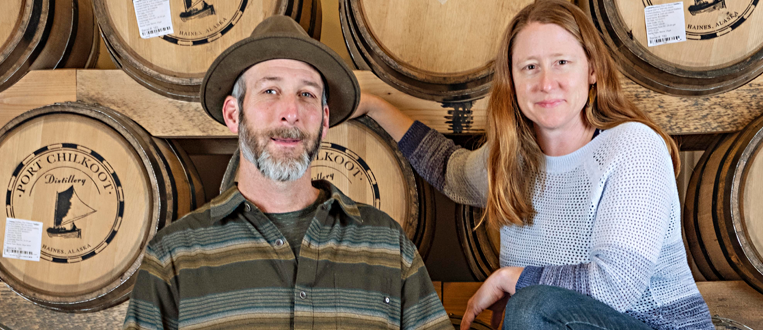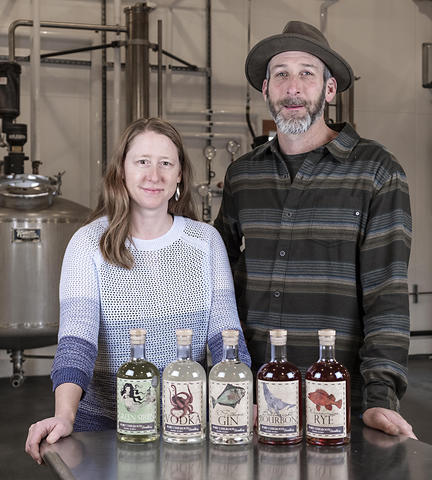Manufacturing Innovation Blog
Powered by the Manufacturing Extension Partnership

The Manufacturing Extension Partnership (MEP) National Network™ is a public-private partnership with Centers in all 50 states and Puerto Rico dedicated to serving small and medium-sized U.S. manufacturers (SMMs). It wasn’t until I started working at MEP that I learned of the more than 1,000 success stories showing the positive impact that the partnership has had on SMMs — including those that make beer, wine and spirits.
One of my hobbies is to sample the offerings of independent breweries, distilleries and wineries. Whether I’m imbibing locally or while travelling, I make it a point to explore new establishments. After writing this blog, I can honestly say that I’ll never look at “happy hour” the same way again. Now when I visit a local watering hole to unwind, I realize I’m doing more than sipping a tasty beverage — I’m supporting the local economy.
So, sit back, relax, and join me as I learn more about these manufacturers. Because, you know, it’s 5 o’clock somewhere.
The Start of Southeast Alaska’s First Distillery

Heather Shade and Sean Copeland met in Haines, Alaska. They became life partners and wanted to remain in Haines, but there weren’t many job opportunities in their fields. Shade was a biologist for the National Park Service, and Copeland was an experienced carpenter. They always wanted to own a business, and Shade always had an interest in craft beverages. “Heather is sharp at what she does, and I’m sharp at what I do, so it came together great,” Copeland says. Going into business with a loved one does have a learning curve. “It’s not for everybody,” he says. “In the beginning I swear it wasn’t for us either. We went through some challenges, but we’re still together.”
They established southeast Alaska’s first distillery, Port Chilkoot Distillery, in 2012. While doing so, Shade and Copeland made sure to use other small businesses across the Pacific Northwest and locally in Haines. Most of the distillery’s raw materials come via barge from Washington state. “We are connected to our supply chains culturally and regionally,” Shade says.
The corn their distillery uses is grown by Washington State farmers and sourced through a small business in Bellingham, Washington. Their distillery partners with local retailers, distributors and marketing agencies throughout the region. Haines is an artsy town, so Shade and Copeland contract with local artists to design labels that are unique to the locale. Not campy polar bears and moose, but rather images that reflect the distillery’s waterfront site, like birds, whales and fish. Lastly, the distillery uses local farms and gardeners to help cultivate the plants and herbs that make its flavors distinctive, which its customers really seem to appreciate and enjoy.
Alaska MEP and Port Chilkoot Distillery
I reached out to the Alaska Manufacturing Extension Partnership and Port Chilkoot Distillery to dive deeper into their collaboration. It was also a great opportunity to acquaint myself with the team that runs the small manufacturing company.
Production at the distillery started in 2013, and soon its first product was on the market. Slowly but steadily, the distillery grew over the years. But with growth comes growing pains. “We used tap water and condensers to cool our wort (a vital component of brewing), and we were going through a lot of water and burning thousands of dollars annually,” Copeland says. Shade got word that Alaska MEP was looking for engineering projects that it could work on. “We always have things that we’d love to do down the road such as getting a bigger still … and reducing energy costs,” Copeland says. “But these things are capital intensive.”
For help, they decided to follow up with Alaska MEP to see if it could help with their expensive cooling issue.
Alaska MEP Answers the Call for Assistance
Samantha Lewis of Alaska MEP was responsible for sending out calls for projects to small and medium-sized manufacturers in the state. When she got a response from Shade, she was able to take Shade and Copeland’s problem and share it with students and staff at the College of Engineering at the University of Alaska Anchorage.
“We would bring up potential projects to the professors, and they would gauge the interest of their students,” Lewis says. “Students get hands-on experience and manufacturers get help. It’s a win-win situation.”
The students selected the Port Chilkoot Distillery project, and the team went to work. Alaska is the largest state by size in the U.S., so naturally there would be some logistical obstacles, especially considering that the students working on the project were 750 miles away from the distillery. They had to tackle the task virtually.
Copeland believed that the distillery would have to purchase a glycol chilling system, which is the industry standard for cooling the wort. During their regular conference calls, the students would come up with different installation and system options. They asked Copeland to take a variety of measurements, and they worked together to hash out ideas and present their findings to various manufacturers.
“I thought it was going to be harder to articulate the questions and answers, but the students did their research,” says Lewis. Afterward, the students came up with a cost analysis of running different size glycol chilling systems. They compared that to the distillery’s current energy usage and how much it could save. The options presented by the students found that using 10-20 ton chillers would decrease the annual water usage and make their distillery more eco-friendly and create a more consistent and sustainable product. If they went with a larger 20 ton chiller, they would save $3.46 a month, and that integrating a buffer tank would reduce upfront costs by $25,000.
Then came the twist.
The solutions were predicated on the purchase of a glycol chilling system. The students presented another option when they realized that Haines gets 65 inches of rain a year and is surrounded by cold Alaskan water. The distillery was better off using what was already at its disposal. The distillery was constantly being hounded by vendors offering business services it didn’t need. According to Copeland, it was refreshing to be presented with the opposite. “We were expecting to pay $200,000 for the system, and then the students reminded us that we have everything there in front of us. That’s a success when you find out you don’t have to do something you think you need to do,” says Copeland. If they decide to implement a chilling system later, they have the groundwork for sustainability and cost savings.
When Copeland and Shade were asked if they would consider using Alaska MEP in the future, they said that they would. Everywhere they look they see engineering challenges and ways to make things better. “It’s good to bounce ideas off students,” Copeland says. “We already work with professional engineers, but they’re expensive. It’s fun to work with students who have both good ideas and are pro bono.”
While not all MEP Centers have access to students to perform project assistance, all MEP Centers have resources to support small and medium-sized manufacturers.
Unique Products Offers Big Gains
Whether it’s the one-of-a-kind Green Siren absinthe or the award-winning 50 Fathoms Gin, Port Chilkoot Distillery has something for everyone. Its locale, its look and its flavors represent everything Alaska and affirm that using fresh and local ingredients tastes better, at least according to its growing base of satisfied customers. That theme can be seen at many small distilleries, breweries and wineries throughout the country. They each have their own story and impact their local communities and economies in different ways. I’m excited to learn more about these SMMs and, perhaps, taste what they’re all about.


